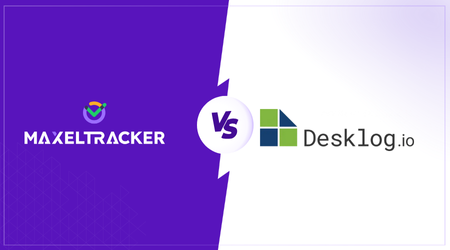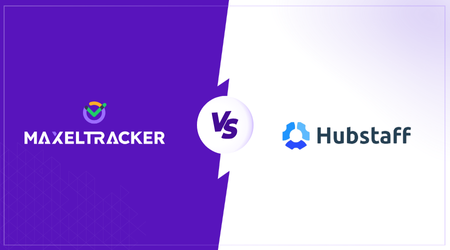

Measuring employee productivity helps businesses understand efficiency, optimize work processes, and improve overall performance. Many companies assume that productivity is just about working longer hours, but real productivity focuses on work output and effectiveness rather than just time spent on tasks.
This guide breaks down how to measure productivity using clear formulas, key metrics, and modern tools. Whether you manage a team or track your own performance, understanding employee efficiency helps improve results without increasing burnout.
Employee productivity refers to how much useful work a person completes within a given time. High productivity means getting more done without unnecessary effort or wasted time. In a business setting, productivity connects directly to company performance and profitability.
Efficiency – Completing tasks with minimal waste of time and resources.
Effectiveness – Producing high-quality outputs that contribute to business goals.
Performance Measurement – Using data-driven metrics to assess individual and team contributions.
Productivity varies by industry. A factory worker's productivity might be measured by the number of products assembled per hour, while a marketing employee's productivity could be based on campaign success or lead generation. Some businesses focus on quantitative productivity (tasks completed), while others prioritize qualitative productivity (work quality and impact).
Understanding these differences helps companies measure and improve workplace efficiency in a way that makes sense for their specific operations.
Measuring employee productivity isn’t just about keeping tabs on work output — it’s about understanding how work gets done. It helps businesses uncover patterns, optimize processes, and make data-driven decisions that benefit everyone in the company.
✔ Identifies Strengths & Weaknesses – Helps pinpoint high-performing employees and areas needing improvement.
✔ Optimizes Workflows – Streamlines operations and removes inefficiencies.
✔ Improves Employee Engagement – Helps ensure employees have the resources and support they need to succeed.
✔ Boosts Profitability – Maximizes revenue generation while minimizing wasted effort.
✔ Enhances Decision-Making – Provides data-backed insights for better workforce management.
When calculating productivity, several key metrics should be considered to understand employee performance.
📌 Output per employee – Measures the total amount of goods or services produced within a specific period.
📌 Revenue per employee – Calculates the annual revenue generated by each employee.
📌 Task completion rate – Tracks the number of tasks completed within a given timeframe.
📌 Utilization rate – Measures the percentage of time spent on productive tasks versus non-productive activities.
📌 Quality of work – Ensures that work quality isn’t compromised for speed.
📌 Employee satisfaction – Evaluates employee morale and engagement, which impacts productivity.
📌 Collaboration effectiveness – Measures teamwork and communication efficiency.
💡 Pro Tip: Businesses should balance both types of metrics to get a complete view of productivity.
Productivity calculations vary depending on business needs. Here are the most common formulas:
A simple formula to determine efficiency:
📌 Productivity = Output ÷ Input
Example:
🔹 A worker assembles 500 units in 40 hours
🔹 Productivity = 500 ÷ 40 = 12.5 units per hour
📌 Productivity rate = Total output ÷ Total input
Example:
🔹 A team produces 2,000 units in 500 hours
🔹 Productivity = 2,000 ÷ 500 = 4 units per hour
📌 Labor productivity = Total output ÷ Number of employees
Example:
🔹 A factory produces 5,000 units with 50 employees
🔹 Labor productivity = 5,000 ÷ 50 = 100 units per employee
📌 Productivity per employee = Revenue ÷ Number of employees
Example:
🔹 A company generates $1,000,000 in revenue with 100 employees
🔹 Productivity per employee = $1,000,000 ÷ 100 = $10,000 per employee
📌 Productivity ratio = Output ÷ Input
Example:
🔹 A team produces 1,500 units in 300 hours
🔹 Productivity ratio = 1,500 ÷ 300 = 5 units per hour
📌 Productivity index = (Current period productivity ÷ Base period productivity) × 100
Example:
🔹 Current productivity: 12 units/hour
🔹 Base productivity: 10 units/hour
🔹 Productivity index = (12 ÷ 10) × 100 = 120% (20% improvement)
💡 Tip: This metric helps track changes in productivity over time.
For businesses that want deeper insights, advanced formulas provide a more detailed analysis.
📌 Multifactor productivity = Output ÷ (Labor + Capital + Materials)
Example:
🔹 5,000 units produced
🔹 Labor: $1,000, Capital: $2,000, Materials: $1,500
🔹 Multifactor productivity = 5,000 ÷ ($1,000 + $2,000 + $1,500) = 1.11 units per dollar
Using Excel can streamline productivity tracking. Follow these steps:
1️⃣ Enter employees' names in Column A
2️⃣ Enter outputs (e.g., units produced) in Column B
3️⃣ Enter inputs (e.g., hours worked) in Column C
4️⃣ Use formula =B2/C2 in Column D (Productivity)
1️⃣ Enter revenue data in Column E
2️⃣ Use formula =E2/C2 in Column F (Revenue per Employee)
1️⃣ Enter base productivity in a cell (G1)
2️⃣ Use *formula =(D2/$G$1)100 in Column G
1️⃣ Enter capital and materials data in Columns H & I
2️⃣ Use formula =B2/(C2+H2+I2) in Column J
Measuring productivity is not always straightforward. Here are key challenges:
🔹 Burnout & Stress – Overworking can reduce long-term productivity.
🔹 Distractions & Interruptions – Meetings and notifications impact focus.
🔹 Micromanagement – Over-monitoring lowers morale.
🔹 Quality vs. Quantity – High output doesn’t always mean high-quality work.
💡 Solution: Focus on sustainable productivity rather than short-term gains.
Boosting productivity isn’t about working harder—it’s about working smarter.
✔ Set Clear Goals – Well-defined objectives improve focus.
✔ Prioritize Tasks – Use frameworks like the Eisenhower Matrix.
✔ Encourage Breaks – Short breaks enhance concentration.
✔ Provide Skill Training – Well-trained employees work more efficiently.
✔ Use Performance Incentives – Rewards boost motivation.
Tracking employee productivity is essential for improving efficiency and driving business growth—but doing it manually can be time-consuming and inaccurate. That’s where MaxelTracker comes in.
With live screen monitoring, automated time tracking, and AI-powered insights, MaxelTracker helps businesses measure performance without micromanaging or disrupting workflows. Stop guessing and start making data-driven decisions that boost efficiency, reduce burnout, and maximize team potential.
✅ Track productivity effortlessly—no manual input required.
✅ Identify inefficiencies before they impact performance.
✅ Improve team output with actionable, AI-driven insights.
💡 Ready to transform your workforce productivity? Try MaxelTracker today!
Related Blogs

Insightful Alternatives & Competitors
Looking for an alternative to Insightful that offers a more tailored approach to workforce productivity and employee monitoring? We’ve got you covered.

Desklog Alternatives & Competitors
MaxelTracker is an all-in-one workforce platform that tracks time, monitors activity, and delivers deep productivity insights, giving you more than just project and task logging.

Hubstaff Alternatives & Competitors
Looking for better alternatives to Hubstaff? Your time tracking software serves as the control center for your team’s productivity. If it's lacking key features, like GPS tracking for mobile teams or other essential tools.